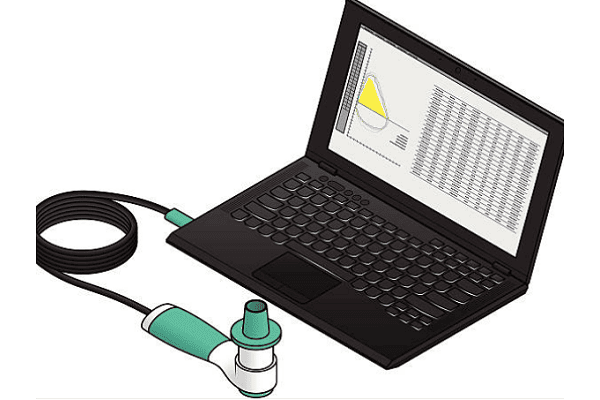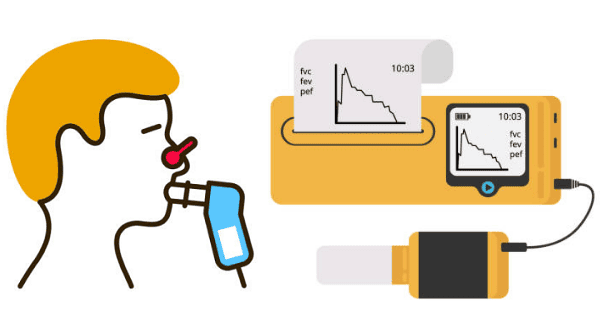Medical procedures >>>> What does Spirography show?
What does Spirography show?

With various lung diseases, the volume of the lungs may change, which affects the efficiency of breathing. The volume of inhaled air (read, Oxygen) determines how well the blood is supplied with oxygen. And this, in turn, is vital for all types of tissues and organs, since Oxygen is the main participant in almost all biochemical reactions that support the life of the body as a whole.
Spirography can display not only the volume of the lungs, but also record changes in the breathing process (wheezing, shortness of breath, uneven breathing, wheezing and other disturbances in the breathing process), as well as display changes in the speed of the breathing process.
Spirography allows one to observe and evaluate the dynamics of the development of many diseases not only of the respiratory system, but also of cardiac activity, and the work of the respiratory muscles (for example, the diaphragm), and the work of the nervous system (for example, changes in breathing during nervous tension, anxiety).

The advent of computer technology allowed the computer to digitize the results of the study and translate them into a graphical and quantitative image, which resulted in the emergence of the terms "Spirography" and "Spirographic study". But earlier there were methods of studying the respiratory function with mechanical devices, and a similar procedure was called "Spirometry" and "Spirometric study". The terms are considered appropriate for use in medicine to this day.
Computer technology has brought more accurate interpretation of all respiratory function measurements to the field of respiratory function analysis and the study of the progression of diagnosed diseases. This improves the quality of analysis and makes it possible to visually display the condition of the lungs.
During the Spirography procedure, the doctor instructs the patient on the course of performing breathing exercises. The respiratory function is studied using mouth breathing, as it allows for the most complete inhalation and exhalation.
The Spirography indicators are very extensive, for example, the following results are displayed:
- the difference in the volume of inhaled and exhaled air;
- the difference in air volumes during calm breathing and forced breathing;
- reserve volume of the lungs, when a person can inhale even more air under conditions of calm inhalation;
- the residual volume of air that a person can still exhale after a calm exhalation;
- what is the maximum speed at which a person can inhale and exhale;
- the total lung capacity of a person at the time of the study for further comparison with future Spirography results and other additional indicators.
Like any medical examination, Spirography has contraindications for conducting, associated with diseases or painful conditions:
- prohibiting full chest breathing,
- when sharp inhalations and exhalations are contraindicated,
- in myocardial conditions that do not allow sharp movements of the diaphragm and other dangerous conditions of impaired well-being.
Spirography can be performed not only for medical research purposes, but also for statistics of medical indicators of human respiratory function - using examples of multiple measurements of breathing in different groups of people (depending on the person's gender, weight or age). Spirography is performed on athletes whose sports require ideal lung condition and large lung volumes. For example, Spirography is regularly performed on athletes involved in short and long-distance running; athletes involved in swimming or diving; professional divers or deep-sea divers, high-altitude climbers, cyclists and other athletes.

Read

Read



























